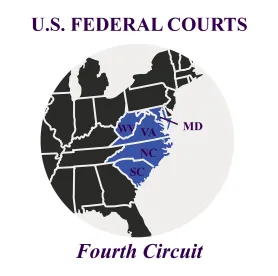Gender dysphoria is not excluded from the broad definition of “disability” protected under the Americans with Disabilities Act (ADA), a divided panel of the U.S. Court of Appeals for the Fourth Circuit has held. Williams v. Kincaid, No. 21-2030 (4th Cir. Aug. 16, 2022). The court’s ruling likewise applies to the analogous Rehabilitation Act.
This ruling reverses the trial court’s dismissal of a lawsuit filed by Kesha T. Williams, a transgender female with gender dysphoria who alleges, amongst other things, that the treatment she received while she was detained in the Fairfax County Adult Detention Center violated the ADA.
Background
Williams alleged that she was wrongfully incarcerated among the prison’s male population, denied requests for accommodations and medical treatment in relation to gender dysphoria (including hormone therapy she had been receiving for 15 years), searched by male officers, and subjected to misgendering and harassment by prison staff and other inmates.
The Sheriff did not contest that gender dysphoria meets the definition of “disability” under the ADA but sought dismissal of Williams’ ADA claim on the grounds that “gender identity disorders not resulting from physical impairments” are specifically excluded by the ADA.
Williams also argued in the alternative that, even if gender dysphoria were a “gender identity disorder,” her claim did not fit the ADA exclusion because she pled that her gender dysphoria was “resulting from physical impairments.”
Construe Coverage Broadly, Exclusions Narrowly
The Fourth Circuit held that gender dysphoria is not a “gender identity disorder,” as that term is used in the ADA. The court explained that when the ADA was enacted in 1990, the term “gender identity” focused on transgender status only and was distinct from and did not include gender dysphoria, which causes “clinically significant distress” and other disabling symptoms. According to the court, the “gender identity disorder” language in the ADA was based on outdated guidance that treated being transgender as a “disorder” in and of itself, whereas modern medicine recognizes that some, but not all, individuals who are transgender will experience gender dysphoria.
The court also held that Williams’ claim did not fit the ADA exclusion because she sufficiently pled in her complaint that her gender dysphoria required hormone therapy, a physical treatment she received for 15 years, and that she suffered physical distress during her incarceration when it was not provided. The court reached these decisions in part based on the 2008 amendments to the ADA and caselaw that direct courts to broadly construe coverage under the ADA and to construe the ADA’s exclusions narrowly.
Finally, the court noted that its finding in Williams’ favor as to coverage under the ADA relieved it from having to confront the possibility of an interpretation of the ADA that entirely excluded transgender people from protection, which would raise constitutional concerns under the Equal Protection clause of the Fourteenth Amendment. The court concluded that Congress did not intend to exclude transgender people who suffer from gender dysphoria from the protections of the ADA.
District Courts Outside Fourth Circuit Have Reached Varied Results
While the Fourth Circuit is the first federal appellate court to consider this issue, whether gender dysphoria can be a covered disability under the ADA has been hotly contested in multiple district courts across the country with mixed results.
Implications for Employers
The Williams decision is controlling in the Fourth Circuit, which covers Maryland, North Carolina, South Carolina, Virginia, and West Virginia. However, employers across the country should take note of the decision and understand that the reasoning of the Williams court could be adopted in their jurisdictions.
As always, employers should be deliberate and careful to ensure that transgender and gender non-binary staff are treated in a respectful manner and that situations that may lead to harassment and discrimination are avoided. With this in mind, employers should understand when a gender transition plan may be necessary and consider how to work with employees to create a comprehensive, successful plan.
Employers also should consider including LGBTQ+ training in their employee anti-harassment and discrimination training.






 />i
/>i
